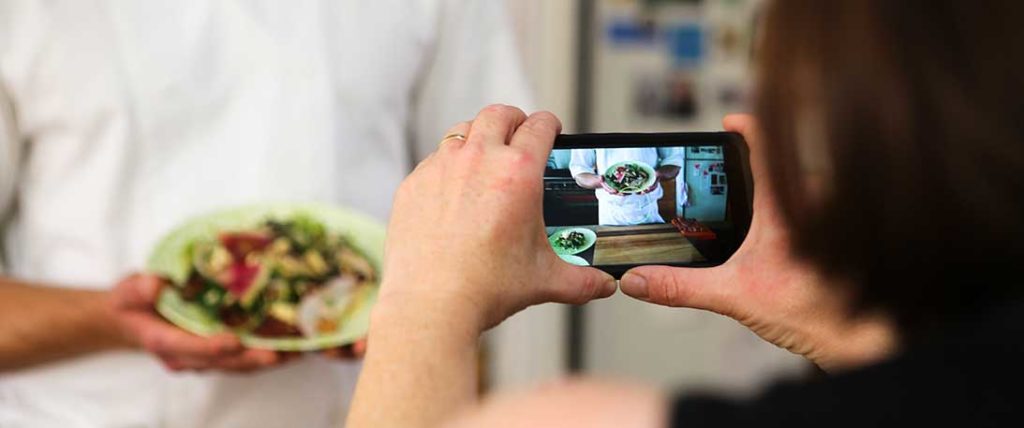
Chefs and operators are just like you, me and your 84-year-old aunt: they’re on social media, probably at this very moment. Of course, this shouldn’t be a surprise. At last count, Facebook had 1.9 billion unique monthly users (Social Media Week 2017), so it’s more of a question of who isn’t on social media at this point. With that being said, it follows that simply knowing chefs and operators are on social (duh) isn’t enough. In order to reach them effectively, manufacturers need to do the following:
1. Understand how chefs and operators are using social media
According to Foodmix’s 2017 social media usage survey of chefs and operators, Facebook and Instagram are the social networking services they use most often daily basis. Instagram is an especially popular platform amongst chefs because it allows them to search for recipes/menu ideas by hashtags and to get a visual snapshot of what’s trending at restaurants across the globe.
When we asked what type of information they would like to see if following a food/beverage brand on social media, the most popular responses were:
- Insights from other chefs (64%)
- High quality food photography (36%)
- Information about their sustainability practices (36%)
- Recipes/menu applications (36%)
This brings up an important point: if you don’t have quality content, you probably aren’t going to get much return on social media efforts. Quality doesn’t just mean pretty photos, though that’s of course a nice start. When assembling content, you should aim to do at least one of the following to ensure that you are delivering useful content to your audience:
- Inspire
- Instruct
- Tell a story
- Provide a special offer
2. Know how to get your social content in front of your target
So you’ve got amazing content, congrats. The next step is getting it in front of your potential customers. If you follow social media news, you are likely aware that Facebook recently revamped its algorithm to make it even more difficult for Business pages to get organic views in newsfeeds. (If this is news to you, get up to speed here: https://blog.hootsuite.com/facebook-algorithm-change-2018.) As a result, most brands turn to promoted posts to ensure their targets are seeing their content. All of the social platforms offer self-serve paid advertising opportunities, but their targeting parameters are generally more conducive to creating a consumer target than an effective B2B target. However, there are a couple of exceptions worth noting. LinkedIn allows for detailed industry and job title targeting via their paid posts, which can be worth exploring depending on your exact target. And if it’s just a matter of wanting to target existing contacts that you have from e-mail databases or visitors to your website, that can be done easily enough through the self-serve tools within all of the platforms.
If none of the above self-serve options work for your brand, enter your friendly trade publishers. Most of the foodservice publishers (Winsight, Penton, SmartBrief, etc.) now offer the ability to retarget their e-newsletter audiences on social at competitive CPMs vs. their native offerings, which is oftentimes the most efficient way to find and build your B2B foodservice audience on social Learning more about what a particular publisher offers in this arena just requires a call or e-mail to your vendor.
While a paid strategy can be critical to the success of a brand’s social presence, that’s not to say that building an audience organically is impossible. With Instagram, for example, effective hashtag usage can help increase views of your posts. According to Sprout Social, Instagram posts with at least one hashtag have 12.6% more engagement than those without (https://sproutsocial.com/insights/instagram-stats/).
3. Build community
Whether you build your audience organically or via paid promotions, you need to be able to retain these new followers by posting regularly, responding to questions and comments quickly, and demonstrating that you have valuable content. Current and potential customers often turn to social channels with customer service requests because they expect a quicker response vs. reaching out through more traditional channels, so it’s critical to have a FAQ-type document at the ready so that your social manager can quickly respond to a majority of scenarios. Being able to provide high-quality informative content AND excellent customer service on a consistent basis is essential to developing a loyal and engaged audience, so take the time to do it right and your audience will follow.
___
Have a question about something we mentioned here or in general about developing a social strategy for your brand? Give us a shout at our Contact Us page or on any of our social platforms.


